#lugh
Explore tagged Tumblr posts
Text
Loki et Luffy !

Spoil one piece
On a là deux figure lugienne qui vont tous pèter !!!!!!!
Oda je te vois et j'aime la soupe que tu me sert 👀


#Loki op#loki#loki one piece#one piece#spoil one piece#mugiwara no luffy#luffy#monkey d. luffy#elbaf#elbaf spoilers#lleu#lug#lugh#lougos#lux#lucifer#aquarelle
259 notes
·
View notes
Photo
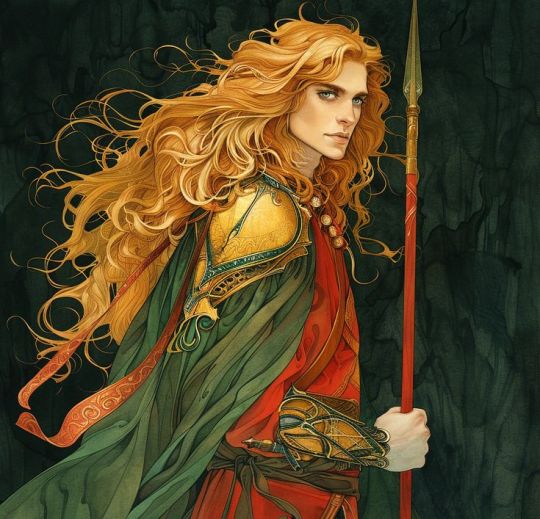
Lugh
219 notes
·
View notes
Text

Another Lugh-inspired drawing. He’s easy to go for inspiration, especially right now when things are feeling their craziest.
803 notes
·
View notes
Text
Dead Gods in Mythology
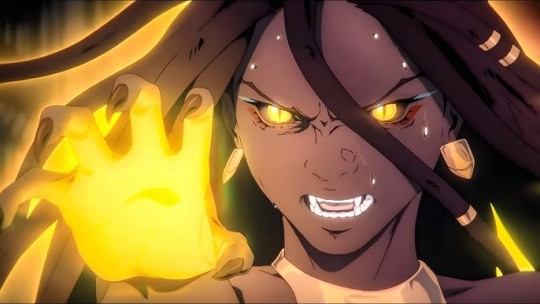
Okay, another little write up that has been requested. (Note, yes, you can send me requests for mythological and historical contexts. I love talking about this stuff. Just send a DM or Ask, and I will see to it when I get time.)
This came from a discussion about Sekhmet in season 2 in Nocturne, where someone brought up: "Well, she cannot really have been a goddess if she died." And of course I had to go: "Well, actually..." At this. It ended with me promising a write up on this.
See, this is an idea that is prevasive in western culture, and gets brought up again and again in media: Gods don't bleed, and gods don't die. It has been brought up in The Road to El Dorado, The Epic Musical, and in Kaos. But this idea is actually mainly rooted in - drum roll please - Christianity of course. With the Christian God being a single god, who is supposed to be all mighty and eternal. Polytheistic cultures meanwhile tend to have a couple of gods who within the mythology die. Sure, some of them are revived by some sort of magic - or continue to exist in another plane (in those cases often becoming the guardians of some sort of plane of the dead, where all dead souls go) - but yes, the polytheistic mythologies that we know off tend to have at least one god who dies.
So, let's talk about some of them.
Ra
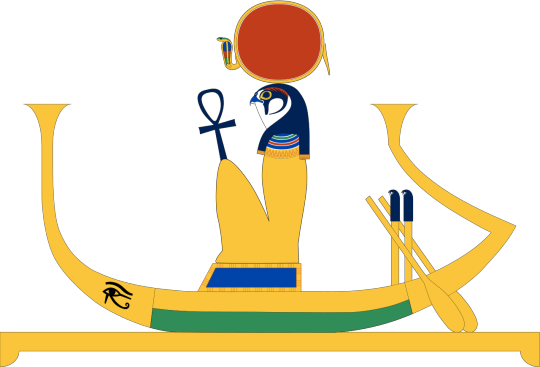
Given our starting point is Sekhmet, let's start with the Egyptian mythology. Here we have two big examples of gods that prominently die.
One example of this is obviously Ra. Ra's entire thing is that he does not only die in the mythology, but that he dies ONCE A DAY, which was the Egyptian mythology's explanation for why there is night and day. Ra dies at the end of the day, and he moved through the duat during the night. This is in fact part of the reason why we know so many details about the duat, as those are described in several mythological texts about Ra's journey through the world of the dead.
Of course, this might be strange example, because Ra obviously gets revived daily, too, but that does not change the fact that he dies once a day. And for a good chunk of Egyptian history (please keep in mind that Egyptian religion shifted during the 3000 years that Ancient Egypt was around) Ra was one of the most powerful gods in their pantheon so to speak.
Osiris
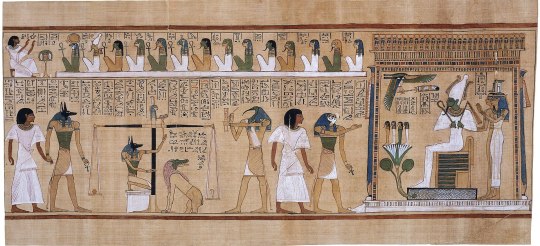
Then Egyptian mythology has probably one of the best known examples of a god getting killed. And that is Osiris. Like almost all of the old mythologies, the Egyptian deities were a lot into siblings marrying. And in Egyptian mythology there were noticable four siblings: Osiris, Isis, Seth and Nephthys - the latter getting usually ignored by modern audiences for some reason.
Osiris married Isis, Seth married Nephthys. And of course, as it goes with godly siblings, Osiris and Seth had a lot of quarelling and rivalry going. Seth - of course - being a god of the desert and chaos. And eventually Seth manages to trap Osiris and kill him. Now, the details of this have shifted once more throughout Egyptian history. In some variations they aphyxiate him, in others Osiris gets hacked into 26 pieces. One way or another, Isis will look for her dead brother-husband, find his corpse or his corpse parts, revive him, get pregnant with Horus, and then they find out that because he was dead he has to become now the god of the dead, being turned into the god overseeing the souls moving into the afterlife.
Baldr

Then there is of course the myth of Baldr in Norse mythology. Another son of Odin and Frigg. And it was said that Baldr was the most beautiful of all the gods. And Frigg loved him so much, that she went around the world and made everything - every stone, every animal and every plant - promise that they would never hurt him. However, she did not get to ask the mistletoe, and Loki noticed this. And being the trickster that he is, he devised a plan. He tricks the blind god Höðr to shoot a mistletoe arrow at Baldr, which then obviously kills him. In the prose Edda this is the reason for Loki's punishment with the acid spitting serpent.
Baldr of course moves onto Hella - the place, not the goddess - and remains there.
It should be noted of course that in the Edda we also know that most of the gods eventually die during Ragnarök. Though this is also where we should note, that the Edda are of course a source that we should use with some care, given that it is not a first hand account by Norse people, but was written up by Christian monks. (Most notable, a lot of researchers doubt by now that Loki ever was an actual god in Norse mythology, but was invented by Christians to fill the roll of a satan-like figure.)
Zagreus
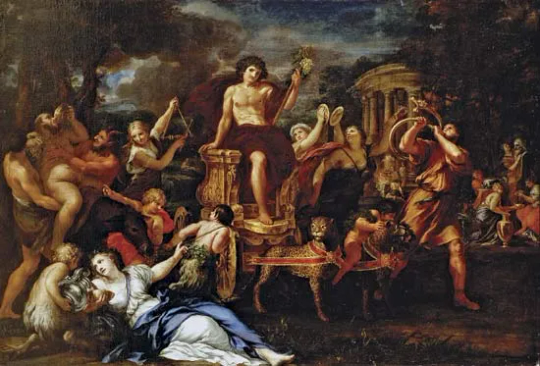
Where are my Hades peeps at? If you have played Hades, you obviously know that Zagreus has this habit of dying and coming back. And this game mechanic is actually based in mythology.
And this is the moment where we should speak about one important fact: We tend to act as if we know everything there is to know about Greek mythology, but actually we do not know this. We know a lot about the most important gods, because we have several written sources about this - but when it comes to smaller or local gods, we absolutely are loosely informed, given we often only have text fragments. At times several text fragments that are contradictory. Zagreus is one of these.
Zagreus is either an alternative name for Dionysus, the son of Zeus and Persephone, or the son of Hades. The latter aspect has been tried to explain by researchers with the fact that we are not sure if the three big gods (Zeus, Poseidon, and Hades) were always distinct entities or might have been for a long while different aspects of the same god.
One way or another: We have at least two different text fragments, in which Zagreus dies. Once he gets murdered by Titans, once he dies in an accident. One way or another he dies. And in the cases where he is a son of Zeus, this seems to be the explanation why he is bound to the Underworld.
The Hades game kinda mixed and matched with the mythology there xD
Lugh

There I go again, talking about another mythology that we are actually not quite as certain about as some people seem to believe we are: Gaelic mythology. Once more, our issue is that while some of this was written down, it was written down after the region had been Christianized, so there is a lot of Christian bias in those texts. In fact it is even more clear in this example, given that the written down accounts of the Gaelic mythology involve references to biblical events. And of course the Tuatha de Danann are in the written down accounts references more as amazing humans, rather than gods - though we are fairly certain they originally were deities, with Lugh in particilar being a god of justice and war.
In the variations of the story we know, Lugh kills another god named Carmait, as that other god had fucked one of Lugh's wives. And in revenge Carmait's sons end up killing Lugh, by spearing him on his own magic spear and then throwing him into one of the Lochs. So, yes, if you count, this story in fact involves two dead gods. Generally speaking, quite a few of the Tuatha de Danann end up dead, though, again, I will point out, that we are not fully sure how much of this is routed in the fact that these myths were recorded by later Christians, who might have wanted to make sure that everyone understands that the Tuatha de Danann were not actually gods.
Izanami
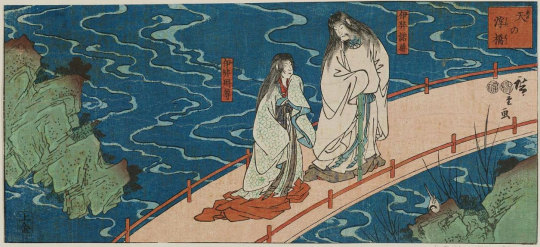
Technically we actually have a variety of Shinto gods (aka kami) who die. But I will focus maybe on the most widely known story, that pretty much everyone who ever played Persona might be aware of: Izanami. And if I recount the tale, you might in fact feel strangely reminded of other myths.
Izanami and Izanagi were the first kami that were created, and they created the land, and then the world around it, through the act of procreation with one another. Eventually Izanami gives birth to the fire god Kagu-tsuchi and he burns her to death. Her remains are buried, but the grief-stricken Izanagi cannot be without her. So he travels to the underworld, Yomi. Eventually he finds Izanami, but she tells him that she can no longer leave the underworld, as she has already eaten from the food of the underworld. He tries to convince her, but eventually he sees her face and realized that she has the face of death, and flees in terror. She gets angry at this, and curses him and the land of the living, before she remains in Yomi as the goddess of the dead.
Vritra
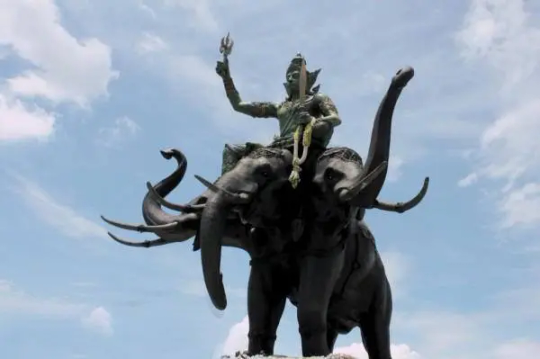
Vritra in Hindu mythology is one of the danava and serves as the personification of drought. In the mythology he once tries to block a river, of course with this causing a drought. The other gods cannot stand by this, and Indra, who sees Vritra as his nemesis, ends up slaying Vritra to stop the drought.
Note, here, too, that there are a couple of deities in Hinduism - as well as the religions that sprung off of Hinduism - that die at least for a shorter while.
If you have ever had the fun of talking to one of the very annoying atheists, you might have heard someone pointing out that Krishna dies and is resurrected in a way that is quite similar to Jesus. Because, yes, this general mythological concept is assumed to probably go back to the progenitor religion of the Indo-European cultures. While we do not know anything about that religion (because back then nobody wrote anything), anthropologists and comparative mythology researchers are fairly sure that there was a tale of a god dying and returning from the dead in that religion as well, which is why it shows up so often in religions of that cultural sphere.
Innana & Dumuzid

Now let's talk about another really old mythology, about which we know surprisingly much, because they have written a lot down - and we were able to translate it. And that is the ancient Sumerian mythology, in which we have Innana or Ishtar (who in Egyptian mythology later became Isis). Again, due to these also being within the realm of the Indo-European mythologies, you will find some similarities - though in comparison to other goddesses in the same role, Innana is a lot more proactive.
Innana is convinced by her brother to marry the shepard god Dumuzid, though it is fairly clear through the poems we have, that she and her husband never quite saw eye to eye. This makes her death also quite interesting. Because Innana dies by her own volition, because her sister Ereshkigal, who was made the goddess of the dead, misuses her position. So Innana dies to be able to travel to the Underworld and fight Ereshkigal to dethrone her. Enki at this point helps Innana to flee the Underworld and return to the world of the living. However, there needs to be balance in the world. So if she returns to the world of a living, someone else needs to take her place in the Underworld.
As she returns to the world of the living, she sees her servants having mourned her, while her husband, Dumuzid, just instantly went: "I am a widower? Sweet! I can fuck around with servant girls now!" And as we say: Fuck around and find out. So Innana goes: "That asshole has not even the decency to act as if he is mourning me!" So he tells the spirits of the Underworld to take him to take her place. And so they do and kill him.
Good for her!
Quetzacóatl
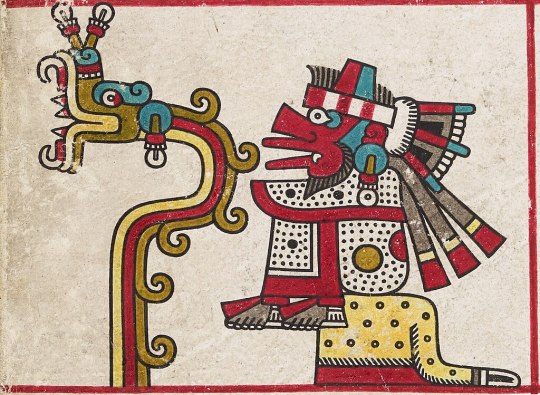
The very attentive of you might have noticed that all myths I have talked about so far (with the exception of Izanami, where anthropologists and comparative mythology people are still arguing about whether or not there was an influence there - mind you, I land very much on the side of "Yes, obviously, there is an Indo-European influence to Shinto-Myth!") are from the Indo-European influence sphere. So let's lastly talk about one other god, who just so happens to be probably important for Castlevania Nocturne as well: Quetzacóatl. Now, historians researching the Nahua, are fairly certain that this myth has come to be because there once was a Nahua ruler named Quetzacóatl after the deity, and that ruler died, which then in mythology got mixed up with the deity. Never the less: There definitely is written down myths about the death of Quetzacoatl.
The short of it is, that a couple of demons plotted to kill him, but knowing that they could not kill a god, they deviced a plan: They would feed him a beer that would drive him mad. While it took a lot of trickery, they succeeded, and drove the god mad, making him commit suicide by burning himself alive.
Maui
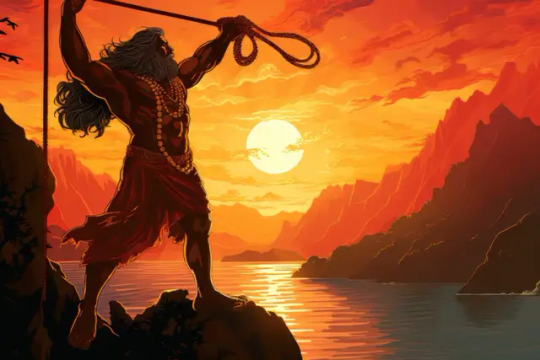
Okay, I know what some might say: "But actually is Maui a god?" I will answer: "That depends who you ask." Maui is a character that shows up throughout almost all the Pacifica cultures. He is always a trickster and a culture hero. At times he is a mortal, at other times he is a demi-god, and at yet other times he is a full god. Because those cultures were distant enough to have the myths shift around. So yes, maybe you will call this cheating. But fuck it, let me talk about Maui, because I kinda think his death is pretty darn cool.
So, if you have watched Moana, you know that Maui is a shape shifter. And he was very fond of humans. So, he decided that he wanted to make humanity immortal. His plan to do so was to go to the goddess of the Underworld and death, Hine-nui-te-pō, and reverse the birth by transforming into a worm and crawl into her vagina. However, she woke, and it turns out that her vagina had teeth - so she crushed him with her vagina teeth. Which is... pretty darn badass, I would say.
Lastly
Let me end this entire thing with the note that there probably are quite a few more gods that die within their respective mythologies. I know at least of two myths from North America in which Coyote dies (a lot of North American cultures have Coyote as a trickster god). And I personally am simply not well informed on South American mythologies or a lot of African mythologies. I do not know stuff about the Indigenous pre-buddhist mythologies of Southeastern Asia, and central Asia. So there is a good chance that there are gods that die - or die and get resurrected in those mythologies - but if there are, I simply do not know enough about them.
Generally speaking though: Gods rarely can be killed by normal mortals. Mortal half-gods might succeed at times. But other gods? Yeah, they sure can kill their fellow deities. And some deities also commit suicide to save other people. It is a common thing throughout mythology.
So, please, can we just stop claiming gods are truly immortal? They will usually not die of old age or anything like that, but they very much can be killed by other gods, magical weapons and such things.
#castlevania#castlevania netflix#castlevania nocturne#mythology#religion#norse mythology#egyptian mythology#greek mythology#japanese mythology#nahual mythology#sekhmet#izanami#celtic mythology#gaelic mythology#lugh#osiris#ra#hades#zagreus
123 notes
·
View notes
Text
More Tuatha De Danann design ideas. I suppose I should do full height for each of them like I did with Dagda and Morrigan

I couldn't decide what would be better for Lugh, with or without a beard, so here is the version with a beard. I wanted to make him similar to Cu Chulainn in a way. After all, he is Lugh's son
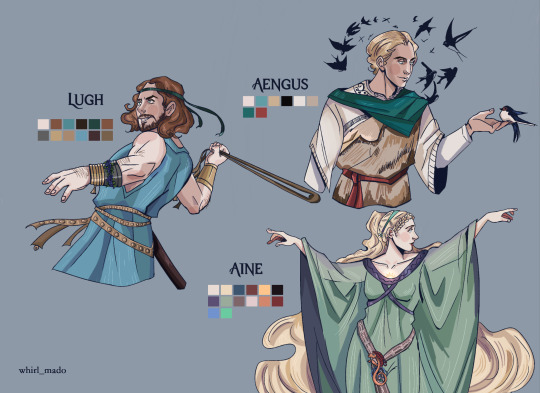
122 notes
·
View notes
Text
money comes easily to me and my hard work always pays off💰🪙
⋆˖⁺‧₊⋆˖⁺‧₊ ☽◯☾ ₊‧⁺˖⋆₊‧⁺˖⋆
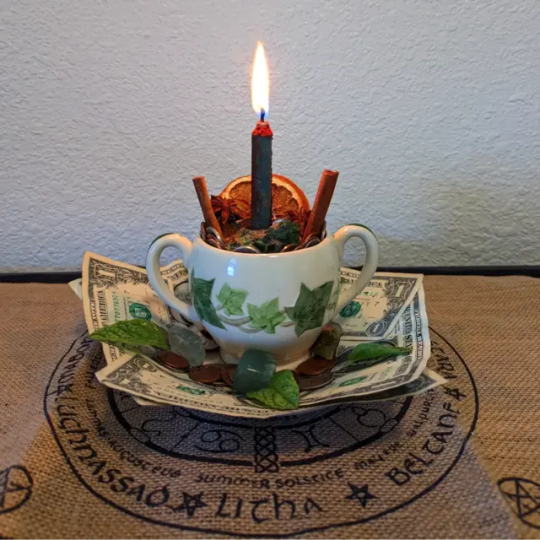

#magick#witch community#witch stuff#homealtar#witch#witchcraft#moneymanifestation#moneybowl#444#manifesting#manifestation#wheeloftheyear#zodiac#zodiacsigns#lilithdevotee#aphroditedevotee#lughdevotee#aphrodite#lilith#lugh#spirituality#pagan#paganwitch#tarot#tarotreader#bonethrower#moneymagnet#moneyflow#paganism#goddessofstrife
320 notes
·
View notes
Text

happy lughnasa 🌽🌾🧺
#myart#lughnasadh#lugh#lughnasa#lammas#celtic mythology#procreate#illustration#artists on tumblr#horse#witchblr
174 notes
·
View notes
Text






Giftset of my OC amv (Without You/Oh Wonder)
Kindly, do not tag these as warrior cats. They are not Warriors OCs.
614 notes
·
View notes
Photo

The Wheel of the Year is a symbol of the eight Sabbats (religious festivals) of Neo-Paganism and the Wicca movement which includes four solar festivals - Winter Solstice, Spring Equinox, Summer Solstice, Fall Equinox - and four seasonal festivals - celebrating or marking a significant seasonal change. Contrary to modern-day Wiccan claims, there is no evidence of an ancient Wheel of the Year in its present form but it is clear that the Celts of thousands of years ago celebrated the festivals the wheel highlights, even if these celebrations were known by another name now long lost. In the ancient Celtic culture, as in many of the past, time was seen as cyclical. The seasons changed, people died, but nothing was ever finally lost because everything returned again – in one way or another – in a repeating natural cycle. Although time in the modern world is usually regarded as linear, the cyclical nature of life continues to be recognized. The modern-day Wheel of the Year was first suggested by the scholar and mythologist Jacob Grimm (1785-1863) in his 1835 work, Teutonic Mythology, and fixed in its present form in the 1950s and early '60s by the Wicca movement. The wheel includes the following holy days (most dates flexible year-to-year): Samhain (31 October) Yule (20-25 December) Imbolc (1-2 February) Ostara (20-23 March) Beltane (30 April-1 May) Litha (20-22 June) Lughnasadh (1 August) Mabon (20-23 September). These eight festivals are designed to draw one's attention to what one has gained and lost in the cyclical turn of the year. As in the ancient Egyptian civilization (and others), the Celts believed that ingratitude was a 'gateway sin' which then led a person into the darkness of bitterness, pride, resentment, and self-pity. By pausing to reflect upon gratitude for what one had been given in a year, as well as what one had lost but still cherished in memory, one maintained balance.
90 notes
·
View notes
Text

All About Lughnasadh
Lughnasadh, also known as Lughnasa or Lúnasa, is the name given to the Gaelic festival that represents the beginning of the harvest season, which traditionally falls on August 1st in the northern hemisphere. The holiday is about halfway between the summer solstice and autumn equinox, and is one of the 4 Gaelic seasonal festivals. Although it is traditionally Irish, many neopagans celebrate the holiday as well.
Traditionally named after the Irish God Lugh, Lughnasadh has been documented to be celebrated since at least the middle ages and involved great gatherings, ceremonies, athletic games like the Tailteann Games, feasting, horse racing, matchmaking, trading, and more, and were traditionally celebrated on top of hills and mountains. The festival remained widely celebrated until about the 20th century, where it seemed to be replaced by Christian counterparts.
Lugh, the God the festival is named after, is said to have founded the holiday as a funeral feast and funeral games to commemorate the death of an earth goddess. The Irish stories vary throughout regions and times, but it usually involves a woman who is stolen away or held against her will and dies of grief, shame, exhaustion, or unspecified causes. There is notable similarities to the Greek Persephone tale. According to a tale about the Lughnasadh festival site Tailtin, it is said to be a funeral for his foster-mother, Tailtiu, who was said to have died from exhaustion after clearing the plains of Ireland for agriculture. A tale about the Lughnasadh site Naas, says the festival was founded in the memory of his two wives, Nás and Bói. Another theory states it was a mourning for the end of summer.
Máire MacNeill, a folklorist, studied the later lore of the holiday and claims it is about a struggle for the harvest between Lugh and another god, often named Crom Dubh. In some stories Lugh must seize Crom Dubh's treasure of grain to give to all of mankind. In other stories, it's over a woman named Eithne who represents grain. Othertimes, its a battle of Lugh defeating a figure representing blight. There doesn't seem to be one agreed upon legend, other than it's revolving around the God Lugh.
As for ancient customs and traditions, they can vary region to region and have morphed throughout time. However, a big tradition was the gathering at Óenach Tailten, a type of olympic style games and gathering where kings declared truces during the entire festival in order to partake and compete against eachother. It included ritual athletic and sporting competitions, horse racing, music and storytelling, trading, law-making and settling legal disputes, creating contracts, and even matchmaking. A common matchmaking tradition was allowing couples to enter a trial marriage that lasted a year and a day by joining hands through a wooden door, after of which they could make permanent or break without consequences once the trial marriage was up. One gathering, called the Óenach Carmain, also consisted of a food and livestock market along with a market for foreign traders.
Other traditions also included a solemn cutting of the first corn to be offered to the deity by bringing it to a high place and burying it, a meal for everyone consisting of the new food and blueberries, a sacrifice and rituals involving a sacred bull, a ritual dance-play, reenactment of the lore, and closing ceremonies. Climbing hills and mountains were also a popular tradition, but has been rebranded overtime as Christian pilgrimages. At some gatherings, everyone wore flowers and climbed a hill, where they buried said flowers at the top to signify the ending of summer. At other gatherings, the first sheaf of harvest was buried instead.
A popular tradition up until about the 18th century were faction fights where young men fought eachother with sticks. One such game consisted of building towers of sod topped with a flag to defend from the other team's sabotaging. Bull sacrifices were also recorded into the 18th century, being used as offerings to various deities, along with special meals made from the first harvest. A special cake called the lunastain was also recorded. Visiting holy wells was also a very prominent tradition, just like during the other yearly festivals. Although bonfires were associated with Lughnasadh and the other main Celtic festivals, they were considered rare for this holiday, most likely due to the very warm summer temperatures.
Some traditions are still celebrated today in Ireland, with festivals being held in honor of Lughnasadh and re-enactors and historians reviving and teaching new generations old lore. There are still markets, traditional dancing, traditional storytelling, arts and craft workshops, feasting, and much more during these modern gatherings, keeping the traditions alive and well, even if they differ region to region. Some pagans and Wiccans also celebrate Lughnasadh, usually differing in their practices, but still using it as a signifier of the first harvest and summer's ending.
Lughnasadh Associations
Colors - yellow, orange, red, brown, green, gold, bronze
Food - blueberries, blackberries, grains, fruit, vegetables, bread, corn, beef, stews, lamb, wine, beer, cider, fruit drinks
Animals - bulls/cows, roosters, sheep
Items - scythes and harvest tools, grain/corn stalks
Crystals - citrine, aventurine, tigers eye, carnelian, topaz
Other - sporting/athletic competitive games, storytelling, matchmaking, cycle of life, harvest
Ways to celebrate:
gather blueberries or blackberries
enjoy grains or breads
make homemade bread
have a feast
climb a hill/take a pilgrimage
offer food to your deity(ies)
commit or recommit to your partner
harvest fresh food from your garden
visit a farmers market
complete a craft or make art
participate in an athletic competition or game
#witch#witchcraft#magick#magic#lughnasadh#lunasa#celtic pagan#eclectic pagan#wiccan#wicca#wheel of the year#sabbath#lammas#lugh#deity#offering#pagan holiday#irish holiday#witchy#spiritual#witchblr#pagan#grimoire#witchcore#harvest#irish#celtic#gaelic#spellwork#paganblr
70 notes
·
View notes
Text

pov: Lugh Samildánach offers you a game of fidchell. your bet?
#artists on tumblr#lugh#lugh samildanach#lugh lamfada#irish mythology#celtic paganism#tuatha de danann#sidhe#irish paganism#irish folklore#celtic mythology#celtic deities#aodhan morris#my art
187 notes
·
View notes
Text

sometimes while journeying/meditating I see something that catches my eye and I make it a point to log as much away as possible for while I’m drawing it
This was a really special one. I tried to take as many notes as possible and record what I could, but this was the best I could get from memory. I’ll probably revisit the design and try to get it more accurate if possible (it’s still missing a few things), but I still like looking at it even just like this!
97 notes
·
View notes
Photo

82 notes
·
View notes
Text

Been wanting to make more work based on Irish paganism and its stories (sort of a blending of jobs hahaha), so I started with an obvious option for me.
Lugh, master of many skills! The "many skills" bit comes in handy for work and an endless sea of special interests, for sure.
#lugh#lugh deity#irish paganism#celtic polytheism#irish polytheism#polytheism#deity work#paganism#illustration#digital art#doodles
719 notes
·
View notes
Text
The Invitation of Lugh:
A Legend of St. Patrick's Day

Rían had never truly believed in gods.
Not in the way his grandmother had, whispering prayers before the fire, not in the way the old stories spoke of them—as distant, laughing things who shaped the world and left men to toil in its shadow. But he had always believed in presence. In the weight of unseen things. In the way the air thickened before a storm, in the way the sea called to the lost, in the way he sometimes felt watched, even when alone.
And now—standing among the crowd, the St. Patrick’s Day parade flowing around him in a river of green and gold—he felt that presence sharpen into something real.
The celebration churned on. Floats gleamed beneath twilight skies, laughter and music rose like a living thing, and yet—something had shifted. It was in the way the streetlights flickered, in the way the wind stilled despite the motion of the banners overhead. The air around him felt charged, cut with something just beyond words.
And then, he saw him.
<Read more below>
A figure among the revelers, yet not—a presence that did not walk, but moved, as if the very world bent around him. He was gold, and yet not merely gold—he was the idea of gold, the glow of firelight on a warrior’s shield, the gleam of the sun upon still water. His stride was effortless, the air shifting in his wake as though even the wind did not dare touch him without permission.
Rían could not breathe.
He knew—without knowing how he knew—who he was.
Lugh.
The Long-Handed.
The Shining One.
The warrior-god, the craftsman, the storm, the king.
The stories had always called him brilliant, but they had never said what it would mean to stand in the light of him.
And then, Lugh’s golden gaze flickered sideways.
He saw him.
Not the crowd.
Not the world.
Him.
Rían’s breath hitched.
The god had noticed.
And now—he was turning.
Lugh was walking toward him.

Rían had always thought of fear as something sharp. A thing of flinching and cold panic, of breath torn from the lungs and muscles screaming to run. But as Lugh walked toward him, as the golden mist curled at the god’s feet and the parade around them blurred into nothing, Rían realized he had been wrong.
Fear was not sharp.
It was weight.
It was standing beneath something vast and knowing it had seen you in return.
Lugh did not hesitate. He did not slow, nor falter, nor glance away. His gaze held all the brightness of the sun, but none of its warmth. Not yet. His presence pressed against the world itself, as though the streets, the sky, and the very fabric of the moment were adjusting around him.
And then—he stopped.
Right before him. Close enough that the light of him made Rían’s breath freeze, made his knees weak.
Lugh tilted his head, studying him. And then, in a voice like tempered steel wrapped in fire, he spoke.
“You see me.”
Rían’s throat went dry. The words were not a question.
Lugh lifted a hand, deliberate, slow, as if giving the moment time to shift into place. And then—he laid it against Rían’s shoulder.
The touch burned. Not painfully, not like flame, but like recognition. Like something reaching into him, through him, past the surface of skin and into the marrow of him.

Rían felt the breath leave his chest. He swayed, and Lugh’s grip tightened—not to hold him back, but to keep him upright.
He should have been afraid. Should have fallen to his knees. Should have looked away.
But he did not.
Instead, he met Lugh’s gaze.
The moment stretched. The world held its breath. And then—Lugh smiled.
It was small, almost imperceptible, but it was there. And in it, Rían felt something shift. The weight did not disappear, but it changed—moved—became something else.
Lugh was not here to destroy him.
He was testing him. Measuring him.
And now—he was waiting.
For what?
Rían swallowed. His heart slammed against his ribs, but his lips parted before his mind could catch up.
“…Yes.”
The word hung between them. Not a plea. Not a question. A choice.
For a long moment, Lugh did not move. Did not speak.
Then, finally—his golden hand tightened at Rían’s shoulder.
Approval.
The world around them seemed to exhale. The mist swirled, the distant sounds of the parade bled back into the edges of awareness, and the glow of Lugh’s presence shifted from something overwhelming into something warmer. Something welcoming.
He had been invited.
And he had said yes.
And so, Lugh stepped forward.
Not away.
Not past him.
With him.

His mind was a storm.
Not a wild, thrashing thing—but a weight in his chest, a pressure, the feeling of standing at the edge of something vast and knowing that once he stepped forward, he could never return.
This was impossible. It had to be. Gods did not walk in parades. They did not reach out and lay their hands upon ordinary men. They did not look upon a crowd and see him.
And yet, Lugh had.
And now—he was waiting.
Rían’s pulse hammered. He felt too small, too human. He was no warrior. No king.
So why him?
Why not the thousands who surrounded them, the ones who would have knelt, wept, begged for this moment?
But Lugh had not asked them.
He had asked him.
And looking into Lugh’s eyes, he understood why.
It wasn’t the sheer presence of him—not just the golden glow, not just the divinity that pressed against the world itself. It was the way Lugh looked at him.
Not as something beneath him.
Not as something unworthy.
But as something seen.
Noticed. Measured. Wanted.
Lugh had chosen him—not for worship, not for adoration, but for something else. A test? A purpose? Something he could not yet name?
He did not know. But Lugh did.
And that was why he could say yes.
Because for all the weight of this moment, for all the power and impossibility, he was not afraid.
Not of Lugh.
Not of what came next.
The gods chose for reasons mortals would never understand.
But Rían did not have to understand. He only had to answer.
And he already had.
Yes.
The word still echoed in his bones. And so, what else was left?
A choice had been made. A path had been laid before him.
Lugh stepped as if to move on.
And Rían—his pulse still thundering, his body still trembling beneath the weight of it all—followed.

Rían did not look back.
The world he had known still existed—the parade’s music, the shimmer of city lights, the distant laughter of revelers unaware of what had unfolded. But it no longer held him. He had already stepped beyond it.
Beside him, Lugh walked as if he had always known Rían would follow. The golden mist curled at their feet, moving with them like breath drawn from the very fabric of the world.
For a time, there was silence.
Then, Lugh spoke.
“You doubt yourself.”
Rían startled. The words were not cruel. Not an accusation. They were a statement of knowing.
Lugh did not stop walking. His stride was effortless, his golden form flickering at the edges, as if he were not wholly bound to the moment.
“You wonder why I saw you,” he continued. “Why I chose you.”
Rían swallowed hard. His throat was dry, but he did not deny it.
A quiet rumble of approval rumbled in Lugh’s chest.
“Men tell stories of kings and heroes,” he said, gaze still fixed forward. “They name strength in their swords, wisdom in their war-craft, power in their conquest. And they are wrong.”
Rían’s brow furrowed. He had never been a warrior, nor dreamed of battle. But kings? Kings were chosen. Kings held power. He was neither.
Lugh glanced at him then, and for the first time, his golden gaze softened.
“The greatest kings are not made by blood,” he said. “Nor by war. They are those who know beauty when they see it.”
Rían felt the words settle in his chest, deep and undeniable.
“I have walked the world a thousand times,” Lugh murmured, turning his gaze back to the horizon. “I have seen men build empires, only to burn them. I have seen those with power squander it, and those with wisdom let it die in silence. But you—”
He paused. When he spoke again, his voice was softer.
“You saw me.”
The golden mist thickened around them. The city behind them faded, its lights swallowed by the quiet swell of something greater.
“Not in fear. Not in worship. But in wonder.”
Lugh exhaled, slow and steady.
“And that,” he said, “is what makes a king.”
Rían could not breathe. The weight in his chest was no longer something pressing down—it was something lifting.
Lugh had seen him.
Not as a warrior.
Not as a conqueror.
Not even as a disciple.
But as a man who could know beauty.
The future cracked open before him, unknown and infinite.
And so—he walked toward it.
#metamorphicmuse#dall e#ai artwork#ai male#ai image#male beauty#handsome male#ai art#gay art#gay#st patrick's day#love is love#gay man#lugh#original character#story
22 notes
·
View notes
Text

Well, design for Lugh. I really like his clothes, bilberry on wrist one of the symbols of Lughnasadh. I tried to make his features sharper, but it turned out that I made him look much younger. Maybe I'll work on his face in future works
46 notes
·
View notes